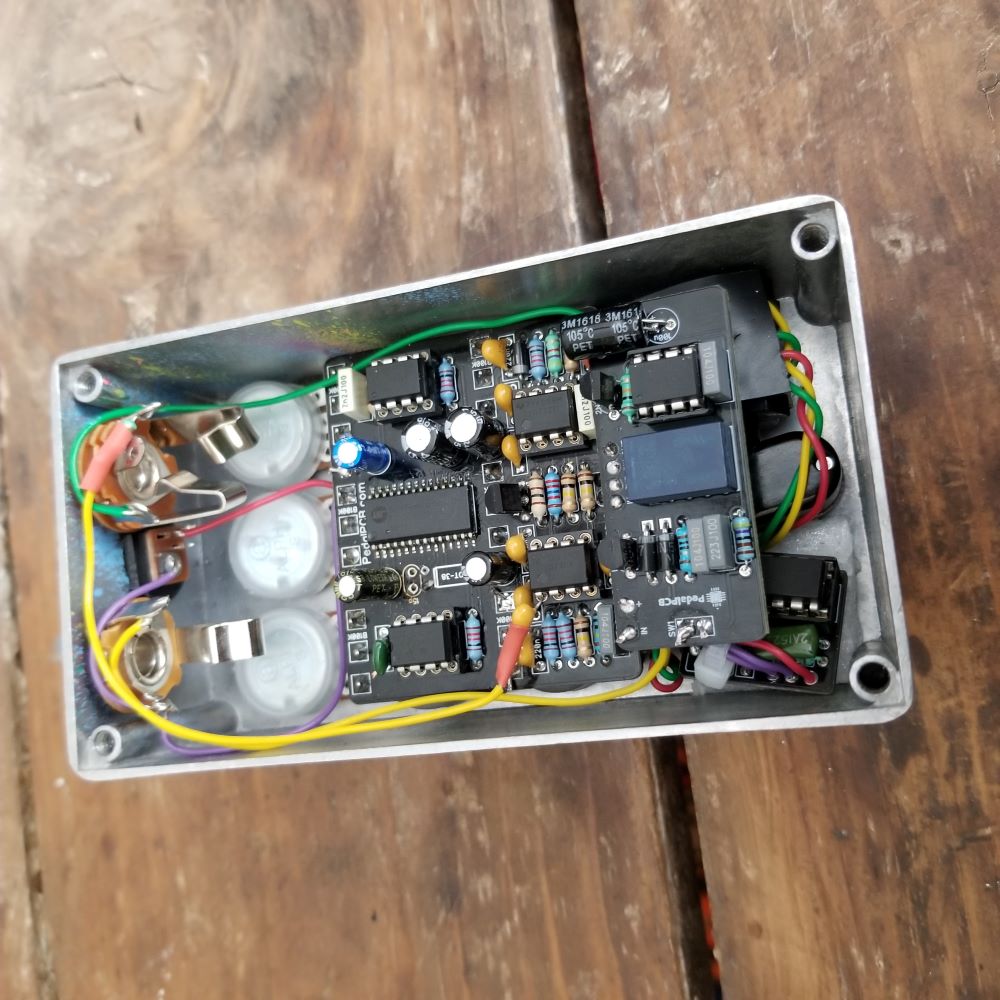p_wats
Well-known member
I posted this build of an old Arachnid board with some mods and everything was working perfectly, until I tried to push it a little further. I wanted to build a little daughter board to sit in the EEPROM socket and switch between 2 EEPROMS (as per this post), but needed to adapt the layout in that thread to fit the older board (EEPROM on the opposite side of the board).
Something appears to have gone wrong, as now the circuit in general doesn't work (I've removed the EEPROM daughter board).
I didn't find any shorts in my daughter board that would have sent 3.3v to the wrong spot, but I now get no output from the FV-1 (not even using the internal programs).
Anything else I should check for?
I've got a rework station, but I doubt it's going to be easy to get this FV-1 off the board and replace it without doing some damage.
Something appears to have gone wrong, as now the circuit in general doesn't work (I've removed the EEPROM daughter board).
I didn't find any shorts in my daughter board that would have sent 3.3v to the wrong spot, but I now get no output from the FV-1 (not even using the internal programs).
- Using my audio probe I get sound at pins 1 & 2 of the FV-1, but nothing at pin 28.
- I've got 3.3v to all the correct pins and also ground where required.
- Mix and volume controls work as expected, reinforcing that maybe I somehow killed the FV-1 itself.
Anything else I should check for?
I've got a rework station, but I doubt it's going to be easy to get this FV-1 off the board and replace it without doing some damage.



